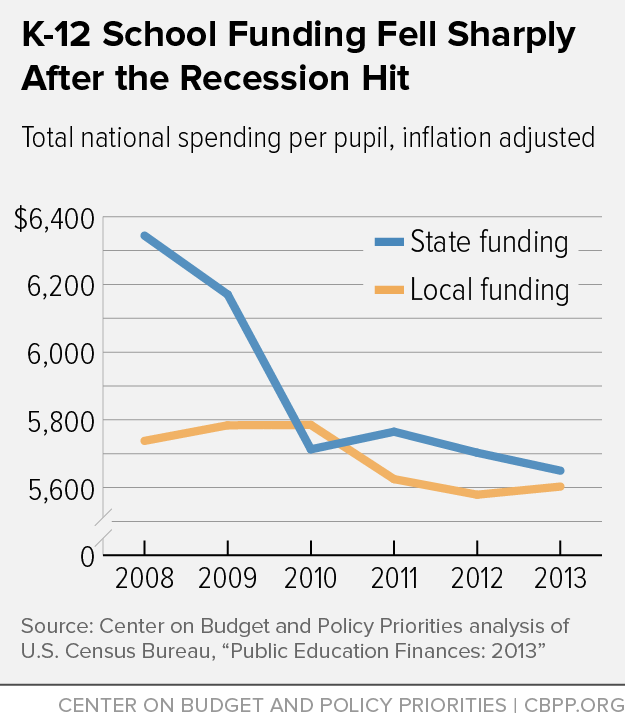BEYOND THE NUMBERS
The Census Bureau’s new school finance data line up with our research, finding that states cut funding for schools sharply after the recession hit and local governments couldn’t make up the difference.
In its studies of school funding from the 2007-08 through 2012-13 school years, Census found that state funding for schools dropped precipitously in the wake of the recession. Local funding remained steady at first but then dropped as the housing crisis shrunk property tax receipts. The updated Census data, which it released this week, show that while local funding for schools rose slightly in 2012-13, state funding — critical to ensuring equitable financing of schools across districts — dropped to its lowest level since the recession began (see chart).
Most states began to reinvest in K-12 education during the 2013-14 and 2014-15 school years, our research shows, but these increases don’t come close to offsetting the post-recession cuts. Thirty-five states funded schools lower in 2014-15 than in 2007-08. (Our research focuses on the major form of state funding for schools, usually known as “formula” funding. Census looks at total state and local funding.)
Deep school funding cuts make it difficult for schools to implement promising reforms such as high-quality teacher recruitment, class size reductions, learning time expansions, and high-quality early care and education. In addition, these cuts prompted school layoffs and pay and benefit cuts for the staff that remained. And the effects of the cuts will reverberate for years to come, as states’ forgone investments in high-quality education — leaving students ill-prepared for higher education and the workforce — may continue to hold back their economies.

